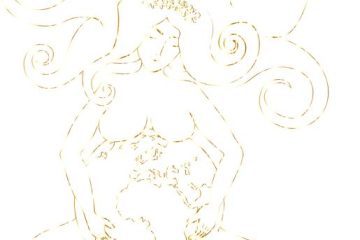In the vast expanse of the cosmos, a delicate dance between life and environment unfolds. Enter Gaia Theory’s Daisy World, a captivating concept where the vibrant blooms of daisies hold the key to regulating planetary conditions. Join us on a journey into this intriguing realm where the beauty of nature intertwines with the intricacies of ecological balance. Let’s unravel the mysteries of Gaia Theory’s Daisy World and explore the harmonious relationship between flora, fauna, and the ever-evolving landscape of our planet.
Table of Contents
- An In-Depth Exploration of the Gaia Theory
- Unveiling the Intricacies of Daisy World
- Applying Gaia Theory to Environmental Conservation
- Empowering Change: Practical Recommendations from Daisy World Perspective
- Q&A
- Concluding Remarks
An In-Depth Exploration of the Gaia Theory
The Gaia theory, famously proposed by James Lovelock, posits a fascinating concept where the Earth functions as a single, self-regulating organism. This holistic view of our planet goes beyond the conventional understanding of separate ecosystems, highlighting the intricate interconnectedness of all life forms and natural processes. This theory suggests that the Earth itself, along with its atmosphere, oceans, and living organisms, work together to maintain the conditions necessary for life to thrive.
Imagine a hypothetical scenario known as “Daisy World,” a thought experiment often used to illustrate the principles of the Gaia theory. In this theoretical world, black and white daisies coexist on a planet orbiting a sun. As the sun’s intensity varies, the population of daisies adjusts: white daisies reflect more sunlight, while black daisies absorb it. Through this interplay, the daisies influence the planet’s temperature, showcasing how living organisms can play a significant role in regulating environmental conditions. The Gaia theory encourages us to perceive Earth not just as a collection of separate elements but as a unified and interconnected system where life and the environment are intricately intertwined.
Unveiling the Intricacies of Daisy World
Exploring the delicate balance of nature on Daisy World brings to light the captivating principles of the Gaia Theory. Here, the harmonious interplay between simple daisies and their surroundings reveals the intricate web of life’s interconnectedness. These humble flowers, with their vibrant petals reaching for the sun, symbolize not just beauty but also the resilience of ecosystems.
- Witness the magic of how these daisies exert a cooling effect by reflecting sunlight, regulating the planet’s temperature.
- Marvel at the adaptability of these floral wonders as they adjust to varying environmental conditions, showcasing nature’s capacity for self-regulation.
On Daisy World, every petal tells a story of survival and symbiosis, painting a vivid picture of ecological harmony. The enchanting dance of life on this floral canvas invites us to ponder the mysteries of interconnected ecosystems and the wisdom hidden within the petals.

Applying Gaia Theory to Environmental Conservation
In exploring the application of Gaia Theory to environmental conservation, we delve into the interconnectedness of all living beings and their surroundings. Gaia Theory proposes that the Earth functions as a self-regulating system like a living organism, maintaining conditions conducive to life. By understanding and embracing this concept, we can work towards creating a harmonious balance between human activities and the natural world.
Imagine a world where every element, from the tiniest daisy to the vast oceans, plays a crucial role in preserving the delicate equilibrium of our planet. This interconnected web of life beckons us to act as stewards of the Earth, nurturing biodiversity and safeguarding ecosystems for generations to come. Through mindful practices and sustainable initiatives, we can harness the power of Gaia Theory to restore and protect the precious environment we call home.

Empowering Change: Practical Recommendations from Daisy World Perspective
In a world where change is inevitable, the Daisy World perspective offers practical recommendations for empowering transformation. Embracing the principles of Gaia theory, we can learn valuable lessons from the interconnectedness of nature and apply them to drive positive change in our own lives and communities. By nurturing symbiotic relationships and fostering a sense of unity with our environment, we can cultivate a harmonious balance that benefits both ourselves and the world around us.
When looking through the lens of Daisy World, we are reminded of the importance of adaptability and resilience in the face of shifting dynamics. Just like the daisies on a changing landscape, we too must learn to adjust and thrive in varying conditions. By harnessing the power of collaboration, innovation, and sustainability, we can sow the seeds of transformation that will bloom into a brighter future for all. Let us embrace the wisdom of Daisy World and cultivate a mindset of growth, empowerment, and positive change for the benefit of all beings on this interconnected planet.
Q&A
Q&A: Gaia Theory Meets Daisy World
Q: What is Gaia Theory and how does it relate to Daisy World?
A: Gaia Theory, proposed by James Lovelock and Lynn Margulis, suggests that the Earth functions as a self-regulating organism. Daisy World is a hypothetical planet mentioned in Gaia Theory to illustrate how life can affect its environment to maintain optimal conditions.
Q: How do daisies play a role in the regulation of temperatures on Daisy World?
A: On Daisy World, white daisies reflect sunlight, keeping the planet cooler, while black daisies absorb sunlight and warm up the planet. This balance maintains the perfect temperature for daisy growth, showcasing the concept of feedback loops in the Gaia Theory.
Q: What lessons can we learn from Daisy World in the context of environmental sustainability?
A: Daisy World teaches us about the delicate balance between life and the environment. It highlights the importance of biodiversity and the impact of living organisms on climate regulation, emphasizing our interconnectedness with the planet.
Q: How does Daisy World challenge traditional views on the relationship between life and the environment?
A: Daisy World challenges the idea that the Earth is simply a passive backdrop for life to evolve. Instead, it presents a dynamic view where life actively shapes its surroundings, influencing climate and conditions to ensure its own survival, mirroring the principles of Gaia Theory.
Concluding Remarks
As we conclude our exploration of Gaia Theory and the fascinating concept of Daisy World, we are reminded of the intricate interconnectedness of life on our planet. From the delicate balance of temperature regulation to the resilience of ecosystems, Daisy World offers us a unique perspective on the intricate dance of nature. As we ponder the implications of this theory, let us take a moment to appreciate the beauty and complexity of Earth and the mysterious ways in which all living beings harmonize to sustain life. Join us in our ongoing journey of discovery as we continue to unravel the mysteries of Gaia Theory and the wonders of our planet.



0 Comments